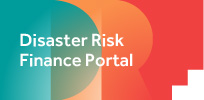Catastrophe Containment and Relief Trust
Published by commonwealth on
Catastrophe Containment and Relief Trust
Structure: The CCRT has two windows: (i) a Catastrophe Containment window, to provide assistance in containing a public health disaster; and (ii) a Post-Catastrophe Relief window, to provide exceptional assistance in the wake of a catastrophic natural disaster. The windows have different purposes, qualification criteria, and assistance terms.
Catastrophe Containment window:
Qualification: There are two alternative qualifying cases of public health disasters. The first concerns a life-threatening epidemic that has spread across several areas of the afflicted country, causing significant economic disruption, and has the capacity to spread or is already spreading to other countries. Significant economic disruption is defined by at least: (i) a cumulative loss of real GDP of 10 percent; or (ii) a cumulative loss of revenue and increase of expenditures equivalent to at least 10 percent of GDP. The second case concerns a life-threatening global pandemic that is inflicting severe economic disruption across the IMF membership and is creating balance of payments needs on such a scale as to warrant a concerted effort to support the poorest and most vulnerable countries through substantial additional grant support and debt service relief. To qualify for the support, the afflicted country should put in place appropriate macroeconomic policies to address the balance of payments needs.
Debt service relief: Eligible low-income countries that are hit by public health disasters as defined above may receive up-front grants for an initial tranche covering eligible debt falling due to the IMF within a period not exceeding six months. Additional tranches would be approved provided the CCRT has sufficient resources, for a period of up to two years from the date of the initial decision to grant relief.
Post-Catastrophe Relief window:
Qualification: A catastrophic natural disaster that has (i) directly affected at least one-third of the population; and (ii) destroyed more than a quarter of the country’s productive capacity, as estimated by early indications such as destroyed structures and impact on key economic sectors and public institutions or caused damage deemed to exceed 100 percent of GDP.
Debt flow relief: Eligible low-income countries hit by catastrophic disasters as defined above would receive debt flow relief on their debt service to the IMF falling due in the two years following the disaster.
Debt stock relief: Full cancellation of a country’s stock of debt to the IMF is also possible in cases where the disaster has created substantial and long-lasting balance of payments needs and where the resources freed up by debt stock relief are critical for meeting these needs. This would typically only be the case if the country faced a very high debt burden. Debt stock relief would be conditional on concerted debt relief efforts by the country’s official creditors and availability of resources in the CCRT.
Provided by
Coverage
Instrument type
Eligibility
Assistance through the CCRT is currently available to countries eligible for concessional borrowing through the Poverty Reduction and Growth Trust (PRGT) and whose per capita income is below the International Development Association’s (IDA) operational cutoff (currently US$1,175) or, for small states with a population of less than 1.5 million, per capita income below twice the IDA cutoff (currently US$2,350).
Intended for disaster response
Available to
Contact
For further information, please contact:

